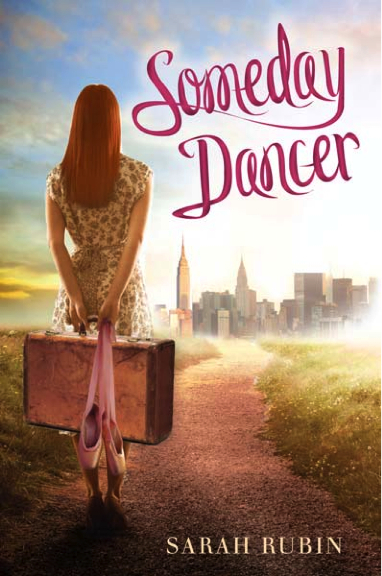Sarah Rubin grew up on an island off the Maine coast. But if you’re eager for a story about herring gulls, fishing boats and the mystery of the tides, you won’t find it in her new book, “Someday Dancer.”
She lives now in Winchester, England. And in this book, you’ll find little hint of that geography, either.
Instead, Rubin’s debut novel for young adults keeps its story firmly focused on New York City, where people and events move fast and the world of dance holds out a beckoning hand to new generations of talented artists.
One of those talents is Casey Quinn of Warren, S.C., a girl on the cusp of high school with rare but untrained dancing ability.
Famed American dancer Martha Graham summed it up this way: “There is a vitality, a life force, an energy, a quickening that is translated through you into action, and because there is only one of you in all of time, this expression is unique. And if you block it, it will never exist through any other medium and it will be lost. The world will not have it.”
Born with a gift for dance that translates music gracefully into motion, our fictional heroine Casey Quinn has the talent and the will to bring her dancing to light. What she doesn’t have is the money. Her father died in the Korean War; her mother and grandmother work to survive as cleaning ladies at the local hospital.
Casey convinces them to help her get an after-school job doing the same. Her goal is to earn enough money in two weeks to pay for a bus trip to New York City, where the School of American Ballet is holding open auditions for scholarships.
Casey gets the job, does the job and earns the money for the trip. One factor, however, thwarts her entry to the school: A natural talent, she has never had a dance lesson in her life.
Yet she is competing in the technical world of ballet with scholarship seekers who have been studying dance for years. Among those competitors is Ann Lee Ryder, Casey’s rival and perennial heckler back in Warren.
Casey does fairly well at the auditions. But the lack of previous dance instruction costs her heavily.
At the same time, her talent does not go unrecognized. George Balanchine, one of our country’s most famed choreographers, is watching as she dances and likes what he sees. Balanchine suggests Casey take a different approach, at least until the gap in her dance instruction is bridged.
He introduces the budding teen to the Martha Graham Center of Contemporary Dance, a citadel of modern dance. And here, Casey finds a home.
She may find it a forever home, Balanchine indicates, or she may want to transfer to the American Ballet school when she’s ready. That will be up to her.
Meanwhile, she works directly with the talented Graham and realizes her ambition — dancing with her on a New York stage.
Casey’s development as a dancer offers a wonderful glimpse, for this book’s target audience of readers ages 12 and up, into the role of famous dancers in seeing new talent into the fold.
It also offers an excellent look at the way young people move ahead, leaving behind the towns that nourished them for the dizzying speed of big cities, home to the future they want to pursue.
Both aspects are worth exploring, and Rubin is a generous guide.
Only a few clumps of awkward language mar this otherwise absorbing story, particularly the emergence in dialogue of the verb “ain’t.” The book doesn’t need it, and some who might otherwise read and enjoy “Someday Dancer” may find it an annoying speed bump.
This book is a good one. It deserves to speak for itself.
Nancy Grape is a freelance writer.
Send questions/comments to the editors.



Success. Please wait for the page to reload. If the page does not reload within 5 seconds, please refresh the page.
Enter your email and password to access comments.
Hi, to comment on stories you must . This profile is in addition to your subscription and website login.
Already have a commenting profile? .
Invalid username/password.
Please check your email to confirm and complete your registration.
Only subscribers are eligible to post comments. Please subscribe or login first for digital access. Here’s why.
Use the form below to reset your password. When you've submitted your account email, we will send an email with a reset code.